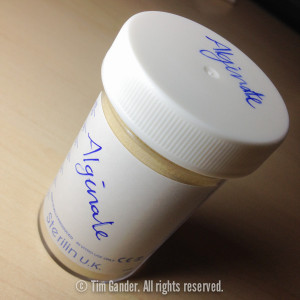Q: What’s the difference between photography and bread?
A: There’s a lot more dough in bread.
That isn’t just a random (and very painful) joke, there is a photography/bread theme to this week’s article.
It’s fair to say that since the start of this year, bread-making has become a bit of a hobby for me. Actually, it’s become something of an obsession, and I think I’ve discovered certain links between the passion I put into my photography and that which I invest in my bread. It’s all about using rules while not sticking rigidly to them, attention to detail while also observing the gut instinct to make adjustments where necessary and both are creative processes where the outcome reflects the un-observed effort which goes into their production.
All this, perhaps self-indulgent, ruminating came about at the weekend, but let me explain the background first.
In August 2012 I was commissioned by Biotechnology and Biological Sciences Research Council (BBSRC) to go to Newcastle University to take some feature photos of Dr Matthew Wilcox and his team who have been working on measuring and maximising the health benefits of alginate as a food additive. Now I can’t give the full scientific breakdown of Dr Wilcox’s research because I’m not a scientist, but in a nutshell alginate is a compound found in seaweed which raises the fibre content of foods to which it is added and may also help with weight loss.
When I next met Dr Wilcox he was a finalist of BBSRC’s Fostering Innovation awards event in London earlier this year and I mentioned I’d got into bread-making. He offered to send me some alginate to try in my bread. Again, like photography, if someone offers you a new ingredient to try, you jump at the chance.
Last week a package arrived at my office containing a note from Dr Wilcox and a small container of alginate and with great excitement I got to bread making on Saturday. While I don’t want to bore you with a blow-by-blow account of my bread making methods, here follow my not-very-scientific observations of making bread with alginate.
I made the dough using my usual methods, but added the alginate powder with the yeast at the start. It was when I came to knead the dough that I noticed the first difference. The alginate acts as a bonding agent, and because I do all my kneading by hand I had to work pretty hard for 15 minutes to get the dough to the stretchy, bouncy state I like. I was a little concerned, but on the plus side, when it came to shaping the loaves I noticed I could get the dough much “tighter”, which is always good.
What I hadn’t expected was the bread to rise so much in the oven and for the bread to turn out quite as light and delicious as it did! I’ve baked wholemeal loaves, white loaves and normally work a mixture of the two (Saturday’s loaves were 50/50 wholemeal and white), but I’ve never had any rise so vigorously in the oven as these did.
The resulting loaves were big and crusty, and once they’d cooled I cut one to discover it had a lovely colour, an open, light texture and smelled amazing. I had to try it just with butter (my standard bread-tasting test) and was delighted with the flavour and texture. My son tried some too and said it was really nice, so that’s a bonus.
Now I’ve run out of photography/bread similes, but if I really wanted to stretch the point, the thing you knead to know is that while my photography earns me a good crust, my bread isn’t crummy either – d’ough!


